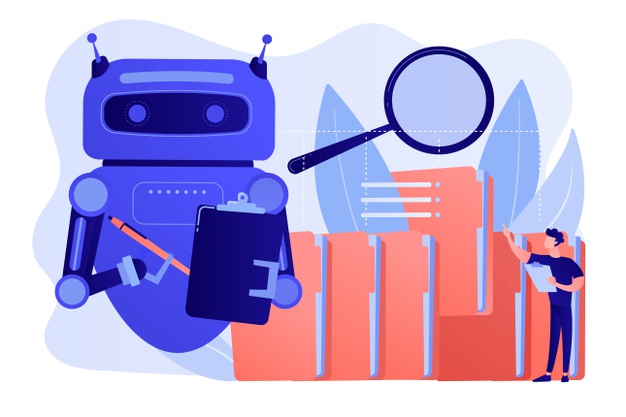Introduction to Deep Learning
₴ 11 500
|
Готуємо конкурентоспроможних фахівців в області машинного навчання для стека наступних професій: Data Scientist і Machine Learning Engineer. Основний ухил зроблений на глибокому вивченні нейронних мереж і фреймворків машинного навчання.
Про курс
Метою курсу є навчання і підготовка конкурентоспроможних фахівців в області машинного навчання. Буде покритий технологічний стек наступних професій: Data Scientist і Machine Learning Engineer. Основний ухил зроблений на глибокому вивченні нейронних мереж і фреймворків машинного навчання.
Ви познайомитеся з основними підходами в машинному навчанні. Навчіться вирішувати завдання регресії, класифікації. Ви будете передбачати ціни реальної нерухомості, класифікувати і кластеризувати зображення. Познайомитеся з необхідними розділами математики. Потім глибоко поринете в світ штучних нейронних мереж. У подробицях розгляньте принципи їх роботи та їх структуру. Після проходження цього курсу ви будете глибоко розбиратися в тому, які типи нейронних мереж підходять для вирішення конкретних завдань. Навчіться їх створювати, тренувати, валідувати і контролювати навчання.
Програма курсу
Introduction to Deep Learning
— Course Review
— What is Machine Learning
— Supervised and Unsupervised Learning
— Machine Learning vs Deep Learning
— CV – Computer Vision
— NLP – Natural Language Processing
— Data Science and Machine Learning
— Breath history of AI
— AI, Turing Test, Philosophy of Science
Python for Deep Learning and Research
— Basic algorithms and common tasks
— Classical algorithms
— Computational complexity
— Useful Libraries and Frameworks
— CPU vs GPU parallelization
— Cloud and GPU Integration
— Data Visualization
— Vectors and Vectorization
— Image Processing
— Language Processing
Mathematics for Deep Learning
— Common Notation and Core Ideas
— Linear Algebra
— N-dim Spaces
— Vectors, Matrices and Operators
— Mathematical and Function Analysis calculus
— Derivative and Partial derivative
— Chain Rule
— Probability theory
— Introduction to Statistics
Linear, Polynomial and Multivariate Regression
— Price prediction Task
— Linear Regression
— Least square method
— Loss Function
— Optimization Task
— Gradient Descent
— MLE – Maximum Likelihood Estimation
— Data Preprocessing
— Model Visualization
— Data Normalization
— Polynomial Regression
— Multivariate Regression
Introduction Computer Vision
— Basic idea of Computer Vision
— Classical Computer Vision
— Deep Learning and CV
— Core Idea of Semantic Gap
— Classification Task
— N-dim Spaces and Metrics
— Common datasets
— Mnist and Fashion-Mnist
— Cifar10 and Cifar100
— Cats vs Dogs
— ImageNet and MS COCO
— Euclidean Distance
— Nearest Neighbour
Classification and Computer Vision
— Image Classification
— Cosine Similarity
— Manhattan distance
— KNN
— Train / Val / Test data split
— Logistic Regression
— Logistic Regression and Maximum Likelihood Estimation
— Loss function and Cross Entropy
— Accuracy and Metrics
— Precision, Recall and F1
Neural Networks
— Rosenblatt’s Perceptron
— Artificial Neuron
— Warren McCulloch and Walter Pitts Neuron
— Fully Connected (Linear, Dense, Affine) Layer
— Activation Layers
— BackPropagation Algorithm
— Stochastic Gradient Descent
— Biological Neuron and Analogy
Computation graphs and Deep Learning Frameworks
— Computational graphs
— Differentiable graphs
— Deep Learning Frameworks
— Custom Framework Realization
— Linear operations and Activation Realizations
— Main Blocks Of Deep Learning FrameWorks
— Custom Model and Train
— Optimizator realization
— TensorFlow
— Keras
— PyTorch
Deep Learning
— Neural Networks Problems
— Activation Functions
— Weights Initialization
— Initialization Techniks
— Overfitting and Underfitting
— Regularization Methods
— L1 and L2 Regularization
— Ensemble of Models
— Dropout
— Hyper Parameters Search
— Optimizations behind SGD
— Momentum and Nesterov Momentum
— Adagrad, RMSprop
— Adam, Nadam
— Batch-Normalization
Unsupervised Learning
— Dimensionality reduction
— Feature Learning
— Vector Representation
— Embeddings
— Kernel Method
— Clusterization
— k-means Clusterization
— Hierarchical Clusterization
— Neural Networks and Unsupervised Learning
— Autoencoders
— Autoencoders architectures
— Tasks for Autoencoders
— Problem of Image Generation
— Image Denoising Task
Introduction to Deep Learning in Computer Vision
— Problems of Fully Connected Neural Networks
— Towards Convolution Neural Network
— CNN as feature extractor
— Computer Vision tasks
— Transfer Learning
— Transfer Learning in Practice
— What Next (breath: CNN Architectures, Image Detection, Segmentation, GANs)
Introduction to Natural Language Processing
— Introduction to Natural Language Processing
— Text classification
— Words Preprocessing and Representation
— Part-of-Speech tagging (PoS tagging)
— Tokenization, Lemmatization and Stemming
Bag of Words
— TF-IDF
— Distributive semantics
— Vector Semantics
— Term-document matrix
— Word context matrix
— Dense Vectors and Embeddings
— Word2Vec
— What Next (breath: RNN, Seq2Seq, Attention, Transformers, Modern Language Models)
Відгуки користувачів
Залиште відгук першим “Introduction to Deep Learning” Скасувати коментар
Схожі Курси







Ще немає відгуків.